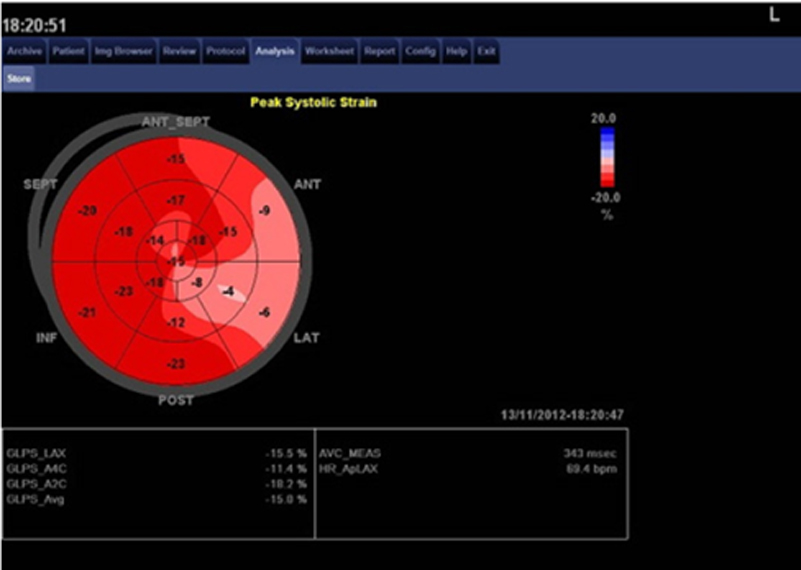Volume 110, Nº 4, April 2018
DOI: http://www.dx.doi.org/10.5935/abc.20180062
ORIGINAL ARTICLE
Applicability of Longitudinal Strain of Left Ventricle in Unstable Angina
Natasha Soares Simões dos Santos
Andrea de Andrade Vilela
Rodrigo Bellio de Mattos Barretto
Marcela Paganelli do Vale
Mariana Oliveira Rezende
Murilo Castro Ferreira
Alexandre José Aguiar Andrade
Nelson Henrique Goes Scorsioni
Olívia Ximenes de Queiroga
David Le Bihan

Figure 3 - Case of patient with unstable angina, anterior descending coronary artery with 90% lesion in the proximal third and circumflex coronary artery with lesion of 70% in the middle third.
Abstract
Background: Unstable angina (UA) is a common cause of hospital admission; risk stratification helps determine strategies for treatment.
Objective: To determine the applicability of two-dimensional longitudinal strain (SL2D) for the identification of myocardial ischemia in patients with UA.
Methods: Cross-sectional, descriptive, observational study lasting 60 days. The sample consisted of 78 patients, of which fifteen (19.2%) were eligible for longitudinal strain analysis. The value of p < 0.05 was considered significant.
Results: The group of ineligible patients presented: a lower proportion of women, a higher prevalence of diabetes mellitus (DM), use of ASA, statins and beta-blockers and larger cavity diameters. The main causes of non-applicability were: presence of previous infarction (56.4%), previous CTA (22.1%), previous MRI (11.5%) or both (16.7%) and the presence of specific electrocardiographic abnormalities (12.8%). SL2D assessment revealed a lower global strain value in those with stenosis greater than 70% in some epicardial coronary arteries (17.1 [3.1] versus 20.2 [6.7], with p = 0.014). Segmental strain assessment showed an association between severe CX and RD lesions with longitudinal strain reduction of lateral and inferior walls basal segments; (14 [5] versus 21 [10], with p = 0.04) and (12.5 [6] versus 19 [8], respectively).
Conclusion: There was very low SL2D applicability to assess ischemia in the studied population. However, the global strain showed a correlation with the presence of significant coronary lesion, which could be included in the UA diagnostic arsenal in the future. (Arq Bras Cardiol. 2018; 110(4):354-361)
Keywords: Angina, unstable / physiopathology; Ventricular Dysfunction, Left; Myocardial Ischemia / physiopathology; Strain; Echocardiography / methods.















